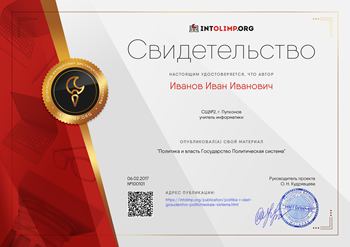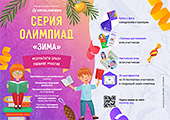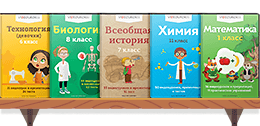| LESSON: My family | School: №13 | Lesson:3 | ||||||
| Date: | Teachername: . | |||||||
| CLASS: 1 | Number present: | absent: | ||||||
| Learning objectives(s) that this lesson is contributing to
| 1. teacher helps learners recognize the intonation in questions and statements 2. make basic personal statements about people, objects and classroom routines | |||||||
|
| 1.L1Recognize short instructions for basic classroom routines spoken slowly and distinctly. 1.S3 pronounce familiar words and expressions intelligibly 1.S6 make introductions and request in basic interactions with others | |||||||
| Lessonobjectives | All learners will be able to: | |||||||
| Sing a song’’ Hello’’ To practise greetings To talk about family members. This is my mummy. | ||||||||
| Most learners will be able to: | ||||||||
| Say simple words with teacher’s support Mummy, daddy, brother, sister. | ||||||||
| Some learners will be able to: | ||||||||
| Make simple dialogue with teacher’s support | ||||||||
| Success criteria | Pupils achieve if: Can pronounce words Can listensounds | |||||||
| Previous learning 5-min | (Activities to revise the vocabulary from the previous lesson.) Ask a pupil to come to the front. Ask him/ her to close his/ her eyes. Ask another pupil to say hello. The pupil with the closed eyes fries to guess who it is. Repeat with some more pairs. Play the hello song from the previous lesson. Invite the pupils to sing along. Track 05 CD 1
| |||||||
| Plan | ||||||||
| Plannedtimings | Planned activities (replace the notes below with your planned activities) | Resources | ||||||
| Beginning 10-min | Learners are introduced with the lesson objectives /D/ Organize the lesson Greetings Hello, Good morning pupils! How are you? Fine, thanks. Sit down.
Warm up. Brain storming. Stand up and look around.
Presentation and practice (activities to present and activate the new language.) Listen, point and repeat. Pupils’ books closed. Put up the flashcards, one at a time, and say the corresponding words. The pupils repeat, chorally and or individually. Point to each flashcard in random order. Ask individual pupils to say the word. Ask the rest of the class for verification. Pupils’ books open. Play the CD. The pupils listen, point to the pictures and repeat the words. Play the CD again pausing after each word. The pupils repeat, chorally and or individually. Audio script Mummy, daddy, brother, sister |
Flashcards
Track 07 CD1 | ||||||
| Middle
10-min
5-min
8-min
| /D/ Teacher demonstrates and drills basic The Alphabet, using visual at board. Aa , Bb, Cc, Dd, Ee, Ff, Gg, Hh, Ii, Jj, Kk, Ll, Mm, Nn, Oo, Pp, Qq, Rr, Ss, Tt, Uu, Vv, Ww, Xx, Yy, Zz
/W/ Teacher models. Teacher introduces self and then names of projected images. Teacher indicates learners in turn to introduce self and then name two projected images of well-known people/ characters.
/G/ In circles of 5-8 learners. Each learner has at least two images of different identities. Learners take turns to say as many names as they can remember after identities are flashed for a few seconds His name/ Her name is … . Game can continue by getting learners of same sex to swap one or more of their identity cards.
Pre-teaching: Mummy – Daddy – Brothers – Sisters – This is – My name is – His name is – Her name is –
Draw and say Read the words. Ask the pupils to repeat after you. Explain the activity. The pupils draw the family members in the space provided. Allow the pupils some time to complete the activity. Check round the classroom, providing any necessary help. The pupils then, in the role of the child, present their family members, by either saying the word (for weaker classes) or the full sentence (for stronger classes). Demonstrate this yourself first. Answer key (This is my)mummy (This is my)daddy (This is my)brother (This is my)sister Sing the family song! Put up the mummy and daddy flashcards, point to them and say: This is my mummy, and this is my daddy. The pupils repeat after you. Follow the same procedure to present the rest of the song. Play the CD. The pupils listen to the song. Divide the class into two groups. Play the song again. The groups sing the assigned verses. Time permitting, play the song a third time for the pupils to sing the song as a class. Audio script /W/ Learners listen and sing along to an animation of the song. Get learners performing gestures to accompany the lyrics of the song- Song: Family! This is my mummy, And this is my daddy. Mummy and Daddy, This is my family!
This is my brother, And this is my sister. Brother and sister, This is my family! (see the introduction for the further ideas on how to exploit the song) Story cutouts from the activity book for ex.6 Let’s listen! Set the scene by asking the pupils questions about what they can see in the pictures. e.g. T: Who is he? Class: Liam! T: Yes! Liam with his friend Andy. Who is she? Class: his mummy! Play the CD. The pupils listen and follow in their books. Audio script 1 Liam: Andy, this is my mummy. Mummy: Hello Andy. Andy: Hello! 2 Liam: This is my daddy Daddy: Hello ,Andy. Andy: Hello! 3 Liam: This is my sister, Lilly Lilly: Hello, Andy Andy: Hello! 4 Andy: And who is this? Your brother? 5 Liam: No! this is Charlies! Play the CD again with pauses for the pupils to repeat, chorally and or individually. Hold up your book to the class. Say the dialogue and point to the pictures in the turn. Repeat, this time inviting the pupils to complete your sentences. e.g.T: Andy,this is my … Class: mummy etc
Work in a pair. Answer the questions: Who is this? Who is he? Who is she? Who is he? He is my granddad. Tell about your family and your friends.
Extension activity (Optional) -For stronger classes: Select a short exchange from the dialogue for the pupils to act out in pairs. Allow them some time to rehearse their exchanges. Have some pairs come to the front of the class and perform their exchanges. -For weaker cases: ask some pupils to take out their story cutouts. Ask them to shuffle them. Play the dialogue with pauses. The pupils listen and hold up the corresponding cutout. |
Flashcards Watch Slide
flashcards
Flashcards Watch Slide
Track 08 CD 1
Listen and sing a song Family Song www.kindsinglish.com
Activity book (track 09 CD 1)
| ||||||
| End 5-min
2-min | The pupils, in pairs, take turns saying a family member’s name and the other has to guess who it is. Demonstrate this yourself first. e.g. P1: Ulan! P2: Your daddy? P2: Your brother? P1: Yes! Etc Activity book If you wish, you can do page 19 from the Activity book during this lesson or the next one. 9-10 smiles- “5” 8-6 smiles –“4” 5-3 smiles - “3” The song “Good bye” | Activity book pictures
CD - player | ||||||
| Additionalinformation
| ||||||||
| Differentiation – how do you plan to give more support? How do you plan to challenge the more able learners? | Assessment – how are you planning to check learners’ learning? | Cross-curricular links | ||||||
| More support: The brainstorming task provides both support and challenge, as it enables learners at different levels of knowledge and content to contribute successfully to the lesson. Teacher can help learners with content and language if it needs to be and challenge learners on language and use of learning skills throughout the lesson as necessary group work allows both stronger and weaker learners to make contributions at their own language level. More-ablelearners:
| Opportunities for formative assessment are embedded in this lesson. Learners and teacher gain feedback on learners’ abilities to plan, organise, cooperate, respect different opinions and solve problems as they work in groups. | Learners work in groups apply skills and knowledge to a practical and cooperative task, and produce their own materials. All of these lesson correlate with the aims of critical and creative communication set out in the Subject Programme for G 1-4 English | ||||||
| Reflection Were the lesson objectives/learning objectives realistic? What did the learners learn today? What was the learning atmosphere like? Did my planned differentiation work well? Did I stick to timings? What changes did I make from my plan and why?
| Use the space below to reflect on your lesson. Answer the most relevant questions from the box on the left about your lesson. All lesson and learning objectives were met. The lesson was exciting. Learners were always in action and interaction. Game style lessons prove to be very useful. | |||||||
| Simulation game created this opportunity for them.
It takes some time until learners get involved into studying process again.
| ||||||||
| Summary evaluation
What two things went really well (consider both teaching and learning)?
1: Simulation game
2: Video and vocabulary prior to the game What two things would have improved the lesson (consider both teaching and learning)?
1: Better level of English language of learners. Inability of communication in English language of some learners keeps behind more able ones as well.
2:Learners came late after flash mob break. This usually happens.
What have I learned from this lesson about the class or individuals that will inform my next lesson?
| ||||||||










